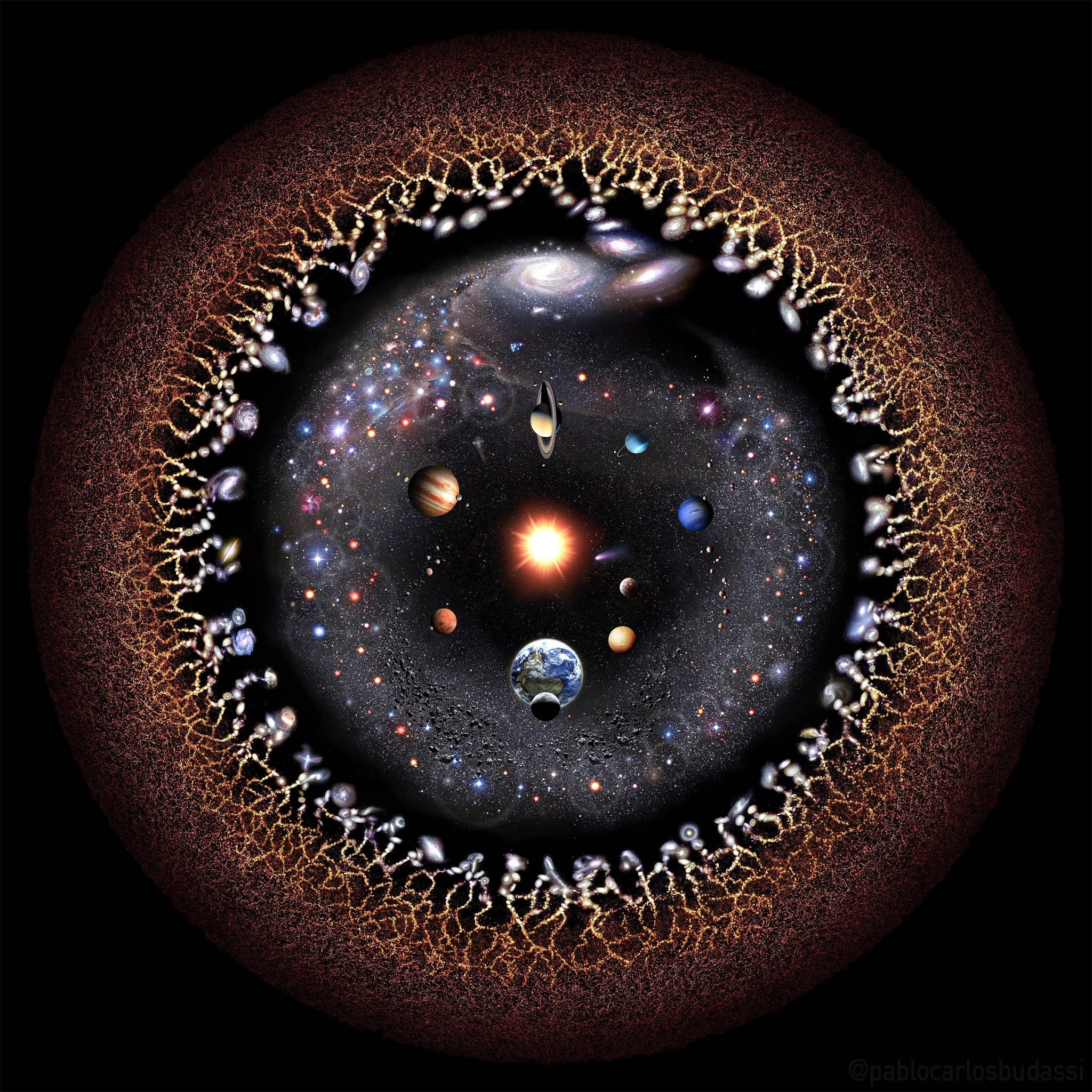Research

Cosmology: study of the formation, nature, and evolution of the Universe
Early Universe: Inflation
Inflation was introduced in the cosmological current paradigm more than 30 years ago to solve the fine-tuning problems of the curvature and of homogeneity on large scale. In the inflationary picture, vacuum fluctuation produced particles which are stretched to cosmological scales in the very first instants of the Universe Inflation has a compelling of observation success but many question are still open:
1) What started inflation, was there something before? What were the initial condition for inflation, how generic were they?
2) What is driving inflation? A scalar field, a modification of the gravitational interaction at high energy?
3) What stopped inflation? how and when is done the transition between the inflationary universe and the actual universe filled with matter of the standard model of particle physics.
In my master thesis, I worked on trying to give an partial answer to question (1) by computing the quantum correction induced by a Loop Quantum Cosmology bounce before the start of the inflation. I leaned how to compute non-standard dynamics of an inflaton field and how to explicitly compute the tensorial power spectrum at the end of the inflation.
The early universe can also be a playground to try to marry gravity and quantum physics. I am specialist of one modest attempt to do so: quantum field theory in curved spacetime. I realized that if an electric field is present, a huge amount of particles could be continuously produced (``Schwinger effect''). The behavior and possible nature of such particles was characterized during the early time of my doctoral studies. I also dedicated some of my time to find reasonable ways those particles could impact. It turns out, in some regime, they can act as an amplifyer for the electromagnetic field but not enough to solve the open problem of magnetogenesis in cosmological scenarios. It is also argued that quantum effects such as spontaneous particles creation may lead to a destabilization of de Sitter space, and may also leads to mimic the so-called slow-roll condition sometimes introduced in inflation. A second very direct way, to observe those pairs is to follow Maldacena's idea of "cosmic collider" and to directly couple the particles created to the inflaton field and observe their signature on the primordial perturbation signal. Thos problems are directly related to question (2) and (3).
Late universe: Formation of Structures
With the idea to put to test, a fundamental assumption of the standard model of cosmology, I proposed a fractal inspired model as a way to constrain the freedom of the radially inhomogeneous Lemaitre-Tolman-Bondi (LTB) model. Those inhomogeneous models are a possible alternative to dark energy. The luminosity distance has been computed and a comparison with supernovae data was carried out. The result is that the data favor the standard FLRW but are also fitted reasonably good by the fractal LTB model. I already worked with the LTB metric during my bachelor thesis aiming at computing the Integrated Sachs Wolf effect in LTB models as a challenge to dark energy.
I now study the one-loop bispectrum including leading relativistic corrections due to the dynamics of the perturbations. Naively, it is expected that the relativistic corrections are negligible both on large scales because the universe is in the linear regime and on small scales because Newtonian equations holds. However, the bispectrum couples scales and in the squeezed limit, we find that the 1-loop relativistic corrections are of the same order of magnitude than the Newtonian results. It is also of the same order of magnitude than the signal that would be induced by primordial non-Gaussianities of the local type.
Cosmological black holes
As a side project, I calculated a possible type of black hole embedded in cosmological setup. The very idea is that instead of requiring asymptotic flatness (Minkowski space), one requires to have a cosmological (FLRW) metric at infinity. The main results are that the horizon radius becomes dynamical, the lensing induced by these black holes is also different. I introduced the dynamical generalization of the Reissner-Nordström black hole: charged cosmological black hole. These objects remain however theoretical in the sense that charged black holes (cosmological or standard) are very difficult to form according to our current understanding of the gravitational collapse.
Image credit : https://pablocarlosbudassi.com/ :